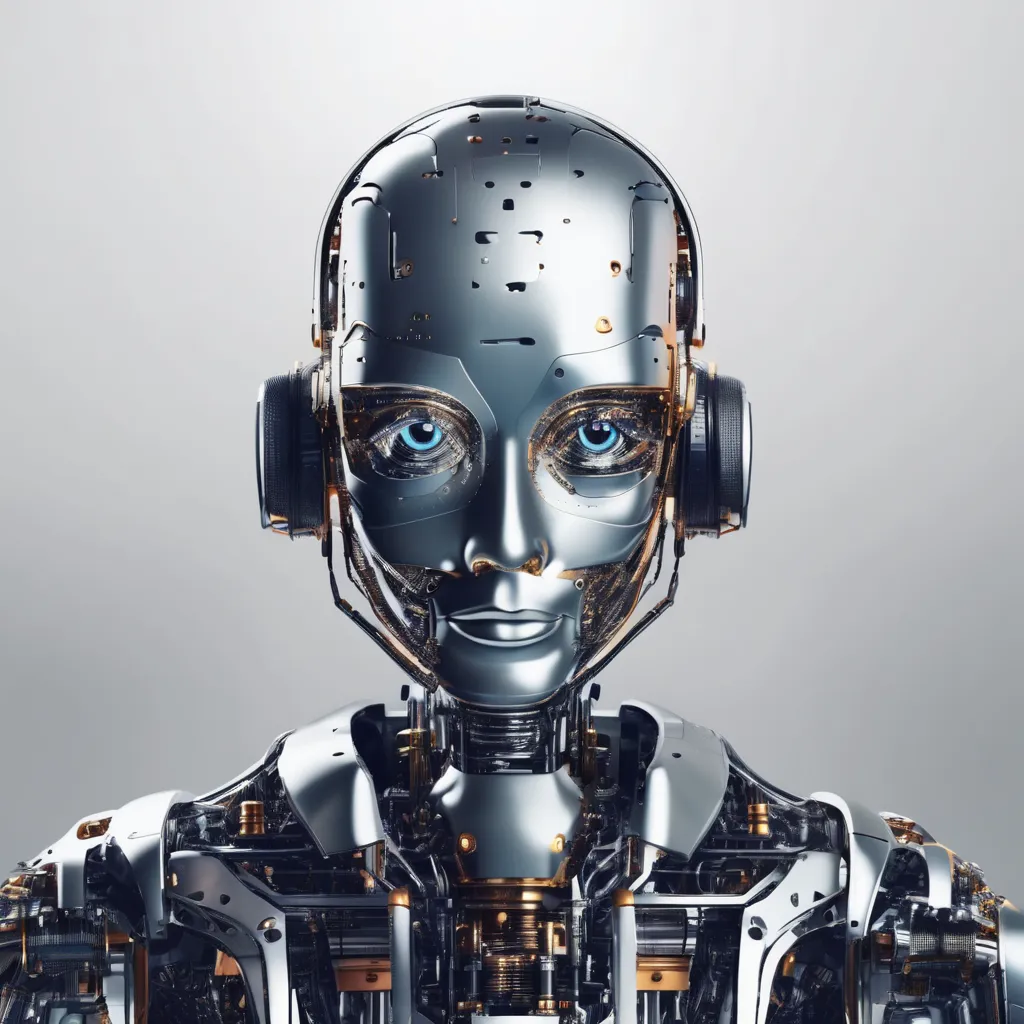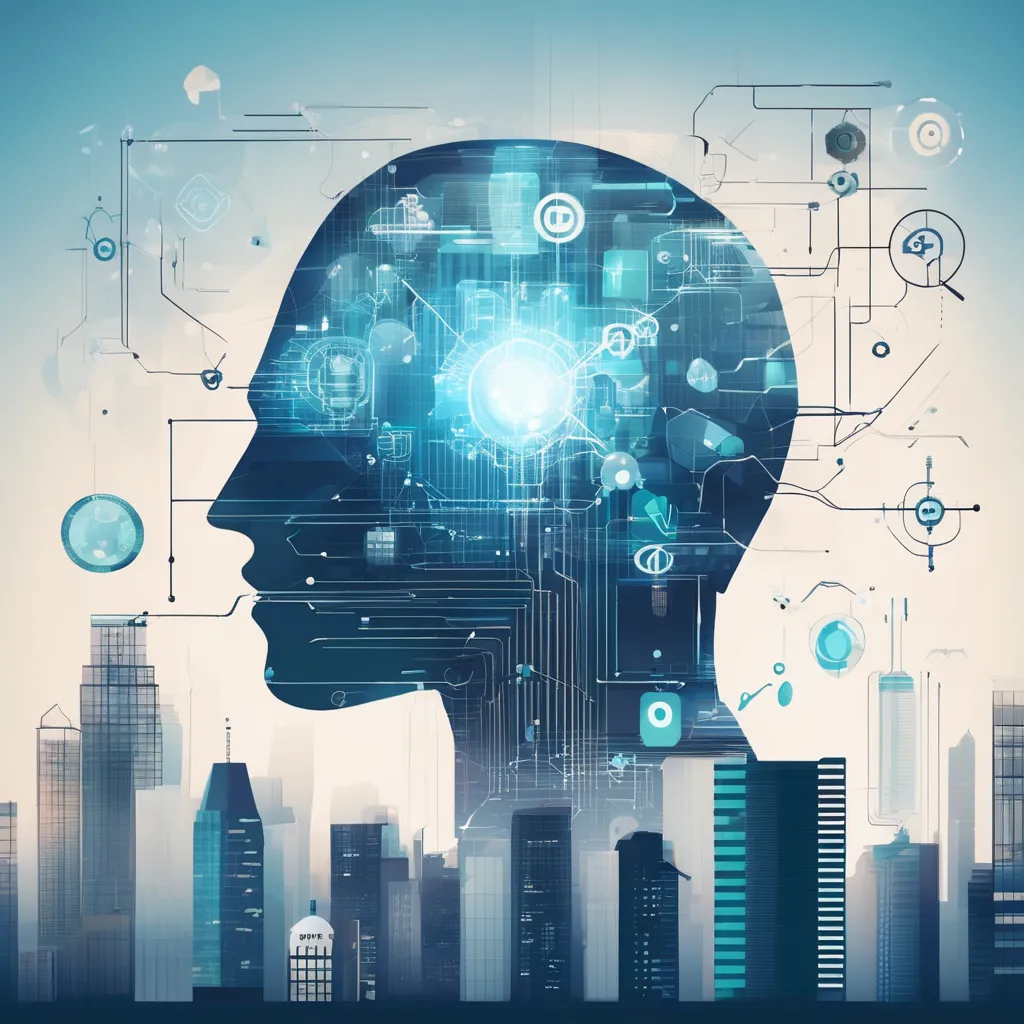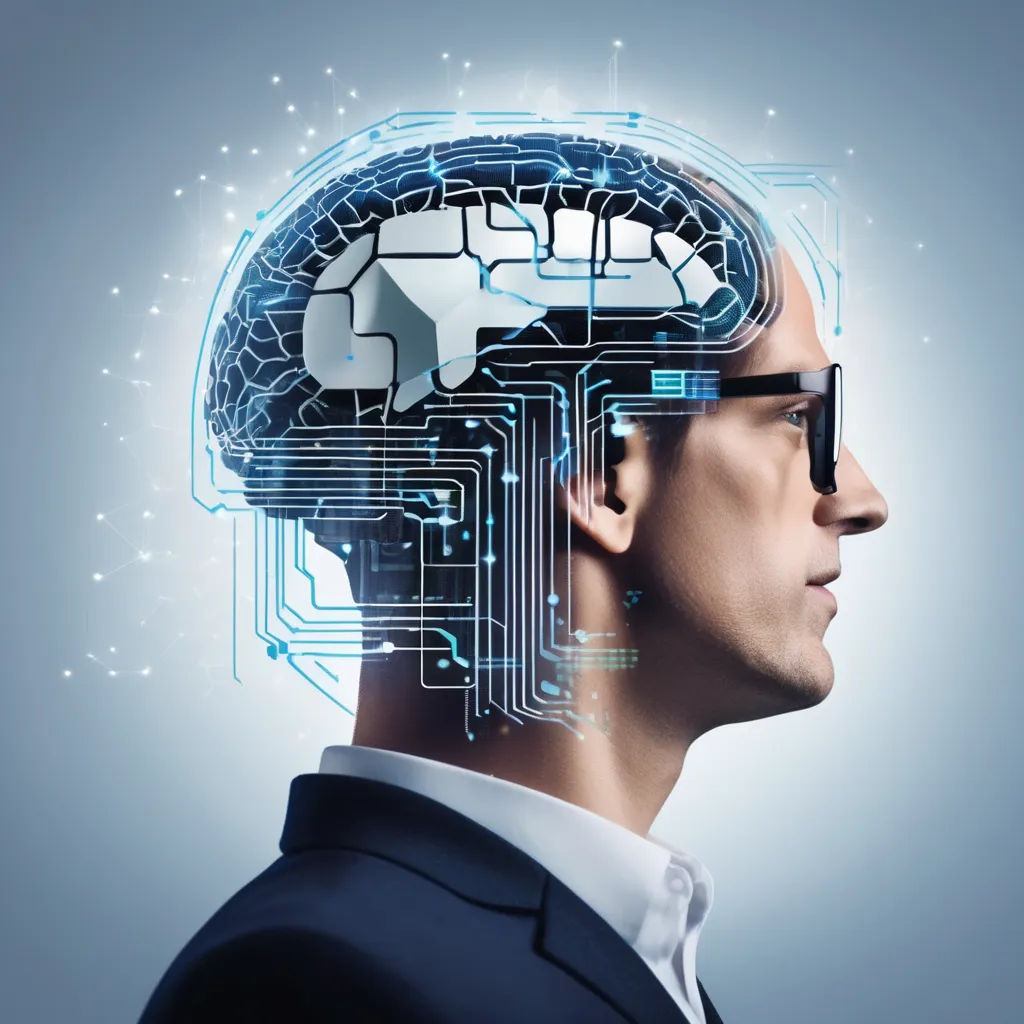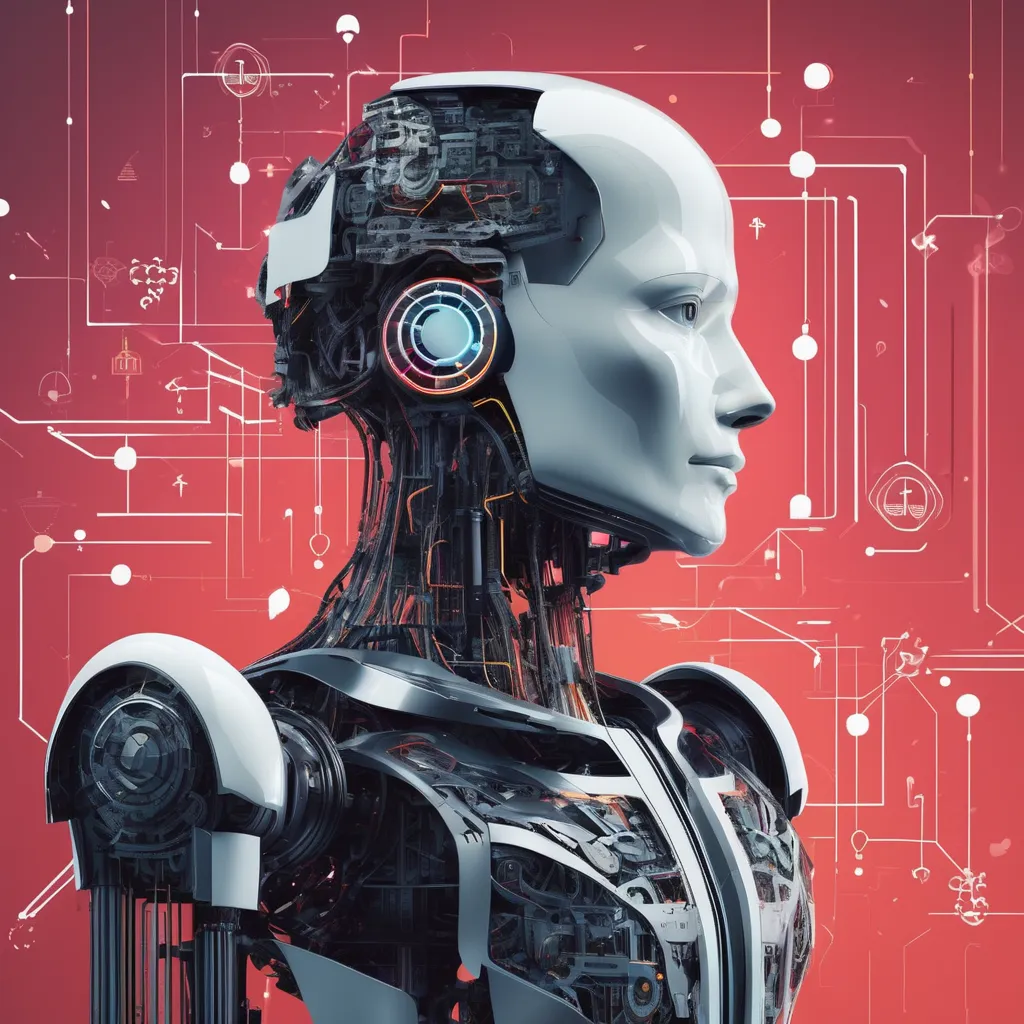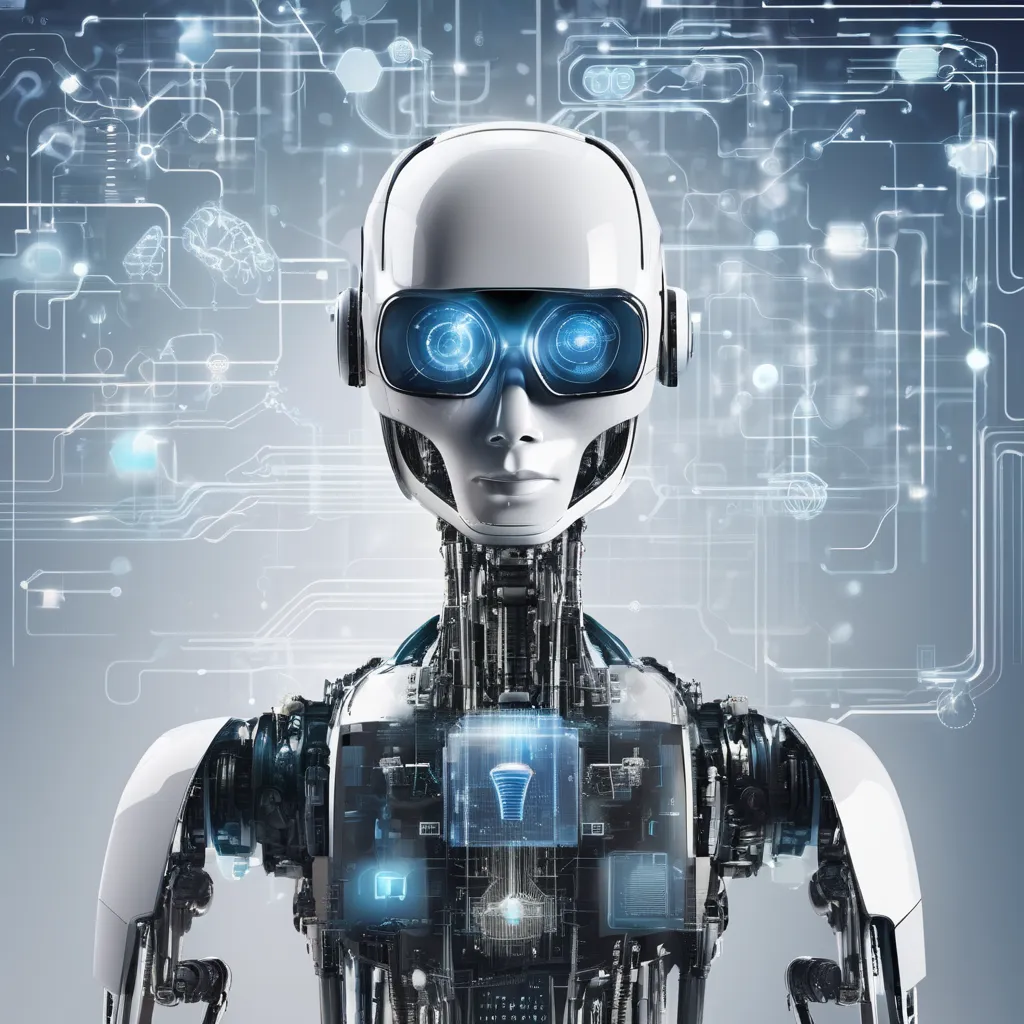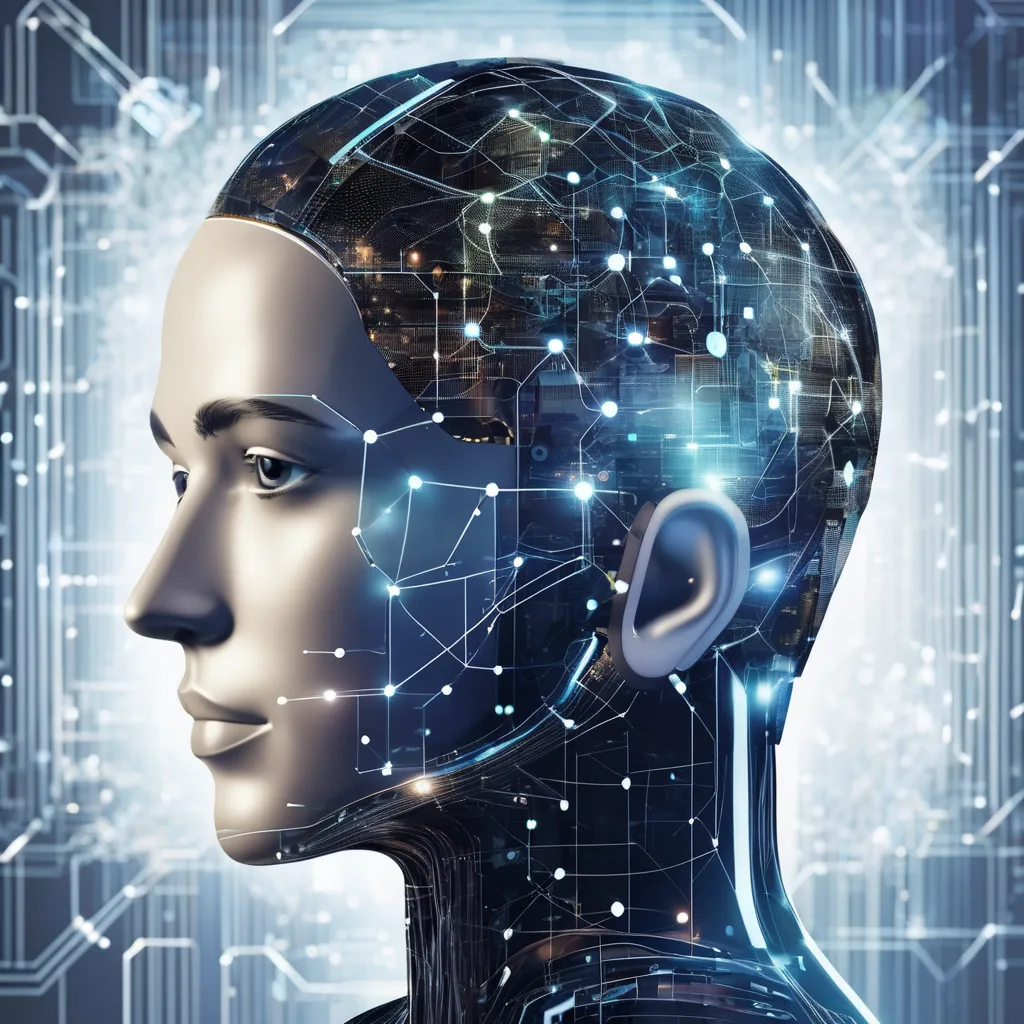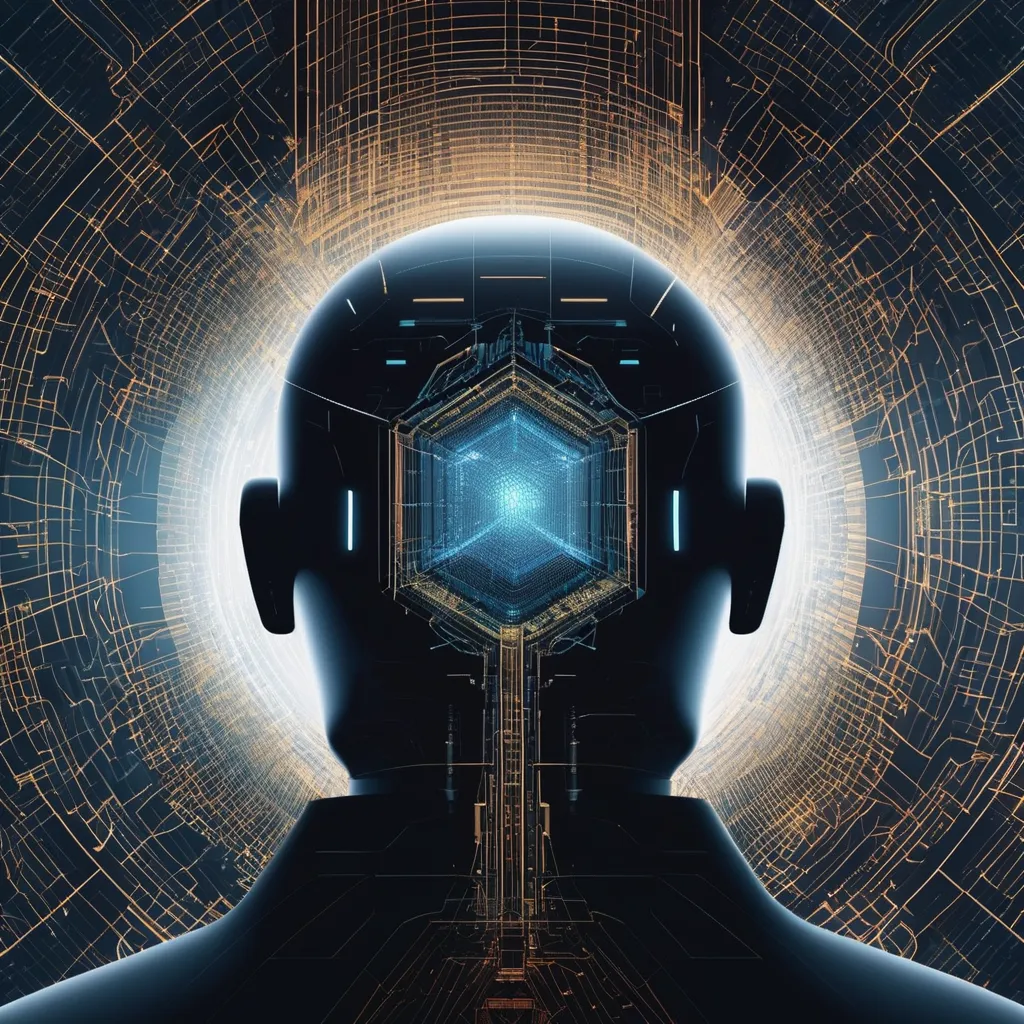The Evolution of AI and its Impact on Human Society
Artificial Intelligence (AI) has profoundly influenced almost every aspect of human life, emerging from speculative fiction to becoming a transformative technology. This article delves into the historical perspectives, theoretical foundations, significant milestones, and the multifaceted impacts of AI on society. By categorizing its content into clear sections, we provide a comprehensive and insightful journey through the evolution of AI and its future prospects.
Introduction to Artificial Intelligence: Historical Perspectives
The concept of Artificial Intelligence (AI) dates back to ancient mythology and philosophy. Early stories and legends envisioned mechanical beings with human-like intelligence, reflecting humanity’s perennial interest in creating autonomous counterparts. Philosophical inquiries in ancient Greece, such as Aristotle’s syllogistic logic, laid preliminary groundwork for AI by exploring the nature of reasoning.
The formal exploration of AI began with the invention of programmable computers in the mid-20th century. Pioneers such as Alan Turing and John von Neumann questioned the possibility of machines replicating human intelligence. Turing’s seminal 1950 paper “Computing Machinery and Intelligence” introduced the Turing Test, a benchmark for machine intelligence still referenced today.
The Dartmouth Conference in 1956 marked AI’s formal inception as an academic discipline. Here, researchers like John McCarthy, Marvin Minsky, and Herbert Simon introduced foundational AI concepts and predicted the potentialities of intelligent machines. Despite initial optimism, the complexity of replicating human cognition quickly became apparent, leading to intermittent periods dubbed “AI winters” due to slowed progress.
Understanding historical perspectives allows us to appreciate the philosophical and technological roots of AI. These early explorations have significantly influenced the trajectory and advancements seen in contemporary AI.
The Genesis of AI: Early Concepts and Theoretical Foundations
The genesis of AI is interwoven with several key theoretical foundations. The theory of computation introduced by Alan Turing and the development of early computers by John von Neumann were critical in providing the necessary hardware and conceptual underpinnings for AI research.
Early AI work focused on problem-solving and symbolic reasoning. Logic Theorist, a program developed by Allen Newell and Herbert Simon, was one of the first AI programs capable of proving mathematical theorems, demonstrating that computers could execute tasks previously thought to require human intelligence.
In the 1960s and 1970s, researchers developed rule-based systems, also known as expert systems. These systems utilized a vast database of knowledge and inference rules to make decisions and solve problems within specific domains. Notable examples include DENDRAL, used for chemical analysis, and MYCIN, an early medical diagnosis system.
AI’s theoretical evolution also integrated approaches from psychology and cognitive science. For instance, research on neural networks was influenced by the understanding of how biological neurons function. These interdisciplinary insights were crucial in developing models capable of learning and adapting.
The theoretical foundations established during AI’s genesis provided the blueprints for subsequent advancements. They highlight the importance of cross-disciplinary collaboration in advancing complex technological domains.
AI Through the Decades: Landmark Achievements and Breakthroughs
The journey of AI through the decades is marked by landmark achievements and groundbreaking breakthroughs that have redefined the technological landscape. The 1956 Dartmouth Conference is often cited as AI’s founding moment, where the term “Artificial Intelligence” itself was coined.
In the 1960s, advancements in natural language processing (NLP) began to take shape with programs like ELIZA, which simulated conversation through pattern-matching techniques. The same decade saw the development of the General Problem Solver (GPS) by Newell and Simon, which attempted to mimic human problem-solving strategies.
The 1970s and 1980s witnessed the rise of expert systems, pulling AI into practical applications in business and industry. Systems like XCON at Digital Equipment Corporation demonstrated AI’s ability to streamline configuration processes, saving significant time and resources.
The 1990s heralded significant improvements in machine learning, with algorithms capable of handling larger datasets and more complex tasks. IBM’s Deep Blue chess computer defeating world champion Garry Kasparov in 1997 exemplified AI’s growing prowess.
The 21st century has seen exponential advances in AI, particularly with the advent of deep learning and neural networks. Google DeepMind’s AlphaGo defeating Go champion Lee Sedol in 2016 marked a watershed moment in AI history, demonstrating AI’s capability to handle complex, strategic tasks.
These landmark achievements showcase AI’s evolution and the continuous progression toward more sophisticated and intelligent systems, driving substantial impacts across various fields.
From Rule-Based Systems to Machine Learning: A Paradigm Shift
One of the most significant paradigm shifts in AI was the transition from rule-based systems to machine learning. Rule-based systems, also known as expert systems, rely on predefined rules and logical frameworks to make decisions. While effective in specific domains, these systems are limited by their inability to adapt or learn from new data.
Machine learning introduced a more dynamic and adaptable approach to AI. Instead of relying solely on predefined rules, machine learning systems use algorithms that enable computers to learn from data and improve over time. This shift was driven by advancements in statistical methods and the availability of large datasets.
Supervised learning, one of the earliest forms of machine learning, involves training a model on labeled data. Algorithms such as linear regression, decision trees, and support vector machines became foundational techniques. Unsupervised learning, in contrast, focuses on discovering patterns and structures within unlabeled data, with clustering and dimensionality reduction being key methods.
The development of reinforcement learning further expanded AI’s capabilities, allowing systems to learn optimal actions through trial and error. This approach has been instrumental in training agents for complex environments, such as game-playing AI and robotic control.
The paradigm shift to machine learning marked a critical turning point, enabling AI systems to achieve higher accuracy, flexibility, and scalability. It laid the groundwork for subsequent advancements in deep learning and neural networks.
Neural Networks and Deep Learning: Catalysts of Modern AI
Neural networks and deep learning have been pivotal in advancing modern AI, driving significant improvements in pattern recognition, natural language processing, and many other fields. Inspired by the structure of the human brain, neural networks consist of interconnected nodes (neurons) that process information in layers.
The resurgence of neural networks in the mid-2000s, combined with the availability of powerful computational resources and large datasets, led to the development of deep learning. Deep learning involves training neural networks with multiple layers (deep networks) to capture complex patterns and representations.
Convolutional Neural Networks (CNNs) revolutionized computer vision by achieving breakthrough performance in image classification, object detection, and segmentation. CNNs have been applied to numerous applications, from medical imaging analysis to autonomous vehicles.
Recurrent Neural Networks (RNNs) and their variants, such as Long Short-Term Memory (LSTM) networks, have made significant strides in natural language processing and time-series analysis. These architectures are adept at handling sequential data, enabling advancements in machine translation, speech recognition, and text generation.
Generative models, including Generative Adversarial Networks (GANs) and Variational Autoencoders (VAEs), have opened new possibilities for creative AI applications. GANs, in particular, have been used to generate realistic images, music, and even human faces.
Neural networks and deep learning have catalyzed modern AI, pushing the boundaries of what machines can achieve. Their impact is evident in the rapid advancements seen across multiple fields, transforming both research and practical applications.
AI in Everyday Life: Transformations in Consumer Technology
AI has become an integral part of everyday life, driving transformations in consumer technology and enhancing user experiences. From virtual assistants to recommendation systems, AI-powered applications have become ubiquitous.
Virtual assistants like Siri, Alexa, and Google Assistant leverage natural language processing and machine learning to understand user queries and provide relevant responses. These assistants have evolved to handle increasingly complex tasks, including controlling smart home devices, setting reminders, and answering questions.
Recommendation systems have revolutionized how consumers discover content and products. Platforms like Netflix, Amazon, and Spotify use collaborative filtering and deep learning algorithms to analyze user preferences and recommend personalized content. This has significantly improved user engagement and satisfaction.
AI-powered image recognition technology is now commonplace in smartphones, enabling features like facial recognition for security and augmented reality experiences. Applications such as Google Photos employ AI to organize and search for images based on content, making it easier for users to manage their photo libraries.
The automotive industry has also embraced AI, with advanced driver-assistance systems (ADAS) enhancing vehicle safety and convenience. Features like adaptive cruise control, lane-keeping assist, and automatic emergency braking rely on AI to analyze sensor data and make real-time decisions.
AI’s presence in consumer technology continues to expand, shaping a more connected and intuitive world. The seamless integration of AI into everyday devices has enhanced convenience, security, and entertainment, fundamentally altering the way people interact with technology.
Healthcare Revolution: AI in Diagnosis, Treatment, and Research
AI is revolutionizing healthcare by enhancing diagnostic accuracy, personalizing treatment plans, and accelerating medical research. Its impact spans various aspects of healthcare delivery, improving outcomes and efficiency.
AI-powered diagnostic tools have shown remarkable performance in medical imaging, often surpassing human experts in detecting conditions such as tumors, fractures, and retinal diseases. Algorithms trained on large datasets of medical images can identify subtle patterns and anomalies, aiding in early detection and diagnosis.
In personalized medicine, AI analyzes patient data, including genetic information, medical history, and lifestyle factors, to tailor treatment plans. For example, AI can predict how patients will respond to certain medications, optimizing drug selection and dosage for individual needs.
Robotics and AI are transforming surgical practices through the development of robotic-assisted surgical systems. These systems provide enhanced precision, flexibility, and control, leading to minimally invasive procedures and faster recovery times. Surgeons can perform complex operations with greater accuracy, reducing the risk of complications.
AI also plays a crucial role in medical research by accelerating the discovery of new treatments and drugs. Machine learning algorithms analyze vast amounts of biomedical data to identify potential drug candidates and predict their efficacy. This accelerates the drug development process, bringing treatments to market more quickly.
Virtual health assistants and telemedicine platforms leverage AI to provide remote healthcare services. These AI-driven systems can triage patients, offer medical advice, and monitor chronic conditions, making healthcare more accessible and convenient.
The integration of AI in healthcare is driving a paradigm shift, making healthcare more precise, efficient, and patient-centered. Its ongoing advancements have the potential to further transform the field, improving health outcomes on a global scale.
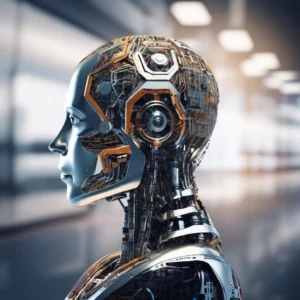
Education and AI: Enhancing Learning Experiences and Outcomes
AI is reshaping education by personalizing learning experiences, automating administrative tasks, and providing new tools for educators. The integration of AI in education is creating more engaging and effective learning environments.
Personalized learning platforms use AI to adapt educational content to individual students’ needs. By analyzing data on student performance, learning styles, and preferences, these platforms offer customized lessons and activities. This approach helps students progress at their own pace, ensuring they master concepts before moving on.
Intelligent tutoring systems provide one-on-one support to students, offering real-time feedback and guidance. These systems use natural language processing and machine learning to understand student input and provide relevant explanations and exercises. As a result, students receive immediate assistance, enhancing their understanding and retention.
AI-powered assessment tools streamline the grading process and provide detailed insights into student performance. Automated grading systems can evaluate both objective and subjective assessments, reducing the workload for educators and offering consistent, unbiased evaluations. Additionally, AI analytics identify areas where students may need additional support, enabling targeted interventions.
Virtual learning environments and AI-driven educational games are making learning more interactive and enjoyable. These tools engage students through gamified experiences, encouraging active participation and reinforcing learning outcomes. Virtual reality (VR) and augmented reality (AR) technologies further immerse students in creative and exploratory learning.
Administrative tasks, such as scheduling, enrollment management, and resource allocation, are also being optimized through AI. Chatbots and virtual assistants handle routine inquiries, freeing up educators and administrators to focus on more impactful activities.
The application of AI in education is enhancing learning experiences and outcomes, fostering a more personalized and efficient educational system. As AI continues to evolve, its potential to transform education and empower learners will only grow.
AI in Business: Streamlining Operations and Driving Innovation
AI is rapidly transforming the business landscape by streamlining operations, enhancing decision-making, and driving innovation. Companies across various industries are leveraging AI to gain a competitive edge and improve efficiency.
One of the most significant impacts of AI in business is process automation. Robotic Process Automation (RPA) uses AI to automate repetitive tasks, such as data entry, invoice processing, and customer support. This not only reduces manual labor but also minimizes errors and increases productivity.
AI is also revolutionizing customer service through chatbots and virtual assistants. These AI-driven tools handle customer inquiries, provide real-time support, and process transactions efficiently. By offering 24/7 assistance and quick resolutions, businesses can enhance customer satisfaction and loyalty.
Data analytics and predictive modeling are key areas where AI is making a substantial difference. Businesses collect massive amounts of data, and AI algorithms analyze this data to extract actionable insights. Predictive analytics helps companies anticipate market trends, customer behavior, and operational challenges, enabling more informed decision-making.
In marketing, AI helps create personalized campaigns by analyzing customer preferences, purchasing history, and online behavior. AI-driven tools can segment audiences, optimize ad placements, and tailor content, resulting in more targeted and effective marketing strategies.
Supply chain management is another domain benefiting from AI. Machine learning models predict demand, optimize inventory levels, and improve logistics planning. This reduces costs, minimizes waste, and ensures timely delivery of goods.
AI-driven innovation is also evident in product development. AI algorithms analyze market data, customer feedback, and industry trends to identify new product opportunities and design improvements. Rapid prototyping and simulation tools powered by AI accelerate the development process, bringing innovative products to market faster.
The integration of AI in business operations is driving significant efficiencies and fostering a culture of innovation. As companies continue to harness the power of AI, the potential for further transformation and growth is immense.
The Role of AI in Finance: Risk Management and Market Predictions
AI is playing a transformative role in the finance sector, enhancing risk management, market predictions, and operational efficiency. Financial institutions are increasingly relying on AI to navigate the complexities of the market and deliver better services to their clients.
Risk management is a critical area where AI’s impact is profound. AI algorithms analyze vast amounts of financial data to identify patterns and anomalies that could indicate potential risks. This helps institutions detect fraud, assess creditworthiness, and monitor compliance with regulatory requirements. Machine learning models can predict defaults and credit risks, enabling banks to make more informed lending decisions.
In the realm of market predictions, AI has proven to be a powerful tool. Hedge funds and investment firms use AI to develop trading algorithms that analyze market trends and execute trades at optimal times. These algorithms leverage historical data and real-time market information to predict price movements and identify investment opportunities. AI-driven trading strategies can adapt to changing market conditions, improving returns and managing risks.
AI is also revolutionizing customer service in finance. Chatbots and virtual assistants provide personalized financial advice, assist with transactions, and answer customer inquiries round the clock. This enhances customer experience and reduces the workload on human advisors.
Robo-advisors are another innovation driven by AI. These platforms offer automated, algorithm-based portfolio management services, providing investment advice and rebalancing portfolios based on individual risk tolerance and financial goals. Robo-advisors democratize access to sophisticated investment strategies, making them available to a broader audience.
AI-powered analytics help financial institutions optimize their operations. Predictive maintenance models can forecast equipment failures in ATMs and other banking infrastructure, reducing downtime and maintenance costs. AI also streamlines back-office processes, such as document processing and reconciliation, improving efficiency and accuracy.
The integration of AI in finance is leading to smarter decision-making, enhanced security, and better customer experiences. As AI technology continues to advance, its role in shaping the future of finance will only become more significant.
Ethical Implications of AI: Balancing Progress with Responsibility
The rapid advancement of AI brings with it significant ethical implications that must be carefully considered. As AI systems become more integrated into society, addressing these ethical challenges is crucial to ensure that AI is developed and deployed responsibly.
One of the primary ethical concerns is bias in AI algorithms. AI systems are trained on large datasets that may contain biases, reflecting societal prejudices and inequalities. If not addressed, these biases can lead to unfair and discriminatory outcomes in areas such as hiring, lending, and law enforcement. Ensuring fairness and equity in AI requires rigorous testing, transparency, and diverse representation in data.
Privacy is another critical issue. AI systems often require vast amounts of personal data to function effectively. The collection, storage, and analysis of this data raise concerns about how individuals’ privacy is protected. Robust data protection measures, including encryption and anonymization, are essential to safeguard personal information.
The autonomy and decision-making capabilities of AI systems also pose ethical challenges. As AI is increasingly used in critical areas such as healthcare, finance, and criminal justice, ensuring that these systems make ethical decisions is paramount. Establishing clear ethical guidelines and oversight mechanisms can help mitigate risks associated with autonomous AI decision-making.
The potential for job displacement due to automation is another significant concern. While AI can create new job opportunities, its impact on the workforce, particularly in industries heavily reliant on repetitive tasks, cannot be overlooked. Policies and initiatives focused on retraining and upskilling workers are necessary to address the displacement caused by AI.
Transparency and accountability in AI development and deployment are essential to build trust. AI systems should be explainable, allowing users to understand how decisions are made. Additionally, there must be mechanisms in place to hold developers and organizations accountable for the ethical implications of their AI systems.
Balancing the benefits of AI with ethical considerations is a complex but necessary endeavor. By addressing these ethical challenges, society can harness the potential of AI while ensuring that its development and use align with core values of fairness, privacy, and accountability.
AI and Employment: Opportunities, Challenges, and Future Trends
The integration of AI in the workplace presents both opportunities and challenges for employment. As AI automates certain tasks and augments human capabilities, its impact on jobs and the broader labor market is significant and multifaceted.
One of the primary opportunities presented by AI is the enhancement of productivity. AI systems can handle repetitive and mundane tasks, allowing employees to focus on more complex and creative aspects of their work. This shift can lead to increased job satisfaction and higher levels of innovation in the workplace.
AI also creates new job opportunities in emerging fields. As companies adopt AI technologies, there is a growing demand for professionals with skills in AI development, data science, and machine learning. Additionally, roles focused on ethical AI, governance, and compliance are becoming increasingly important, offering new career paths.
However, the automation of tasks through AI also poses challenges, particularly the risk of job displacement. Jobs that involve routine, repetitive tasks are most vulnerable to automation. Industries such as manufacturing, retail, and administrative support are likely to experience significant changes in their workforce dynamics.
To address these challenges, reskilling and upskilling initiatives are crucial. Providing workers with opportunities to acquire new skills relevant to the AI-driven job market can mitigate the impact of job displacement. Education systems and training programs must adapt to equip individuals with the competencies needed for the future of work.
The impact of AI on employment also varies across different regions and demographic groups. Developing countries and low-income populations may face greater challenges due to limited access to training and resources. Policymakers must consider these disparities and implement strategies to ensure inclusive growth and equitable access to opportunities.
Future trends in AI and employment are likely to involve a symbiotic relationship between humans and AI. Rather than completely replacing human workers, AI will increasingly serve as a collaborative tool that enhances human capabilities. The concept of “human-in-the-loop” AI emphasizes the importance of human oversight and intervention in AI systems, ensuring that technology complements rather than displaces human labor.
Navigating the opportunities and challenges posed by AI in employment requires
